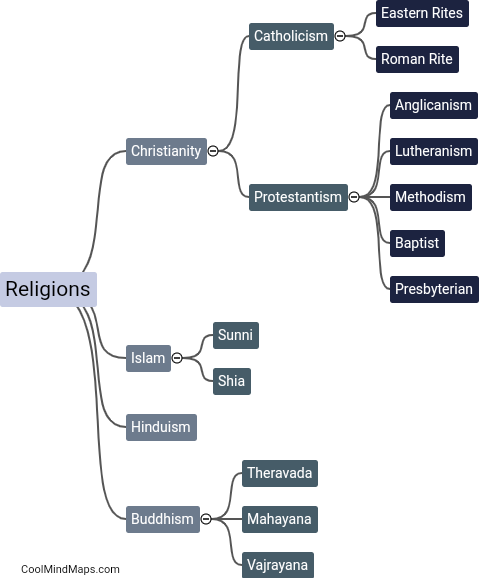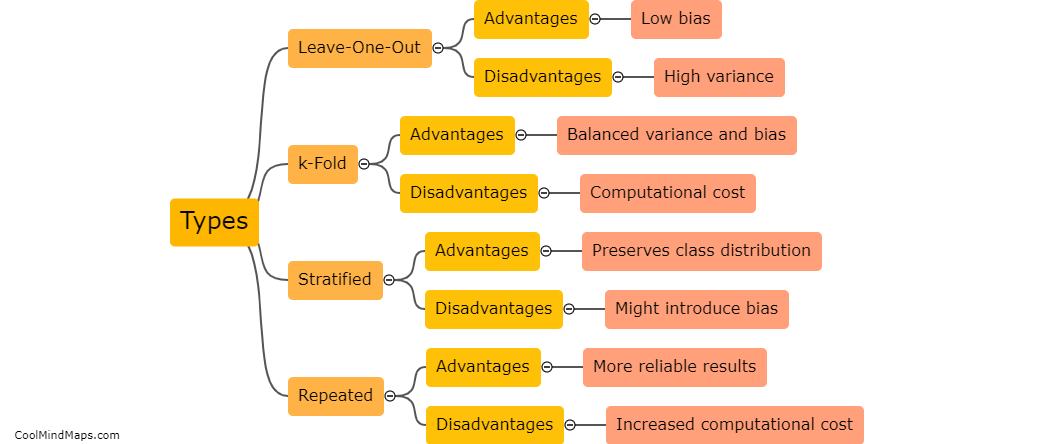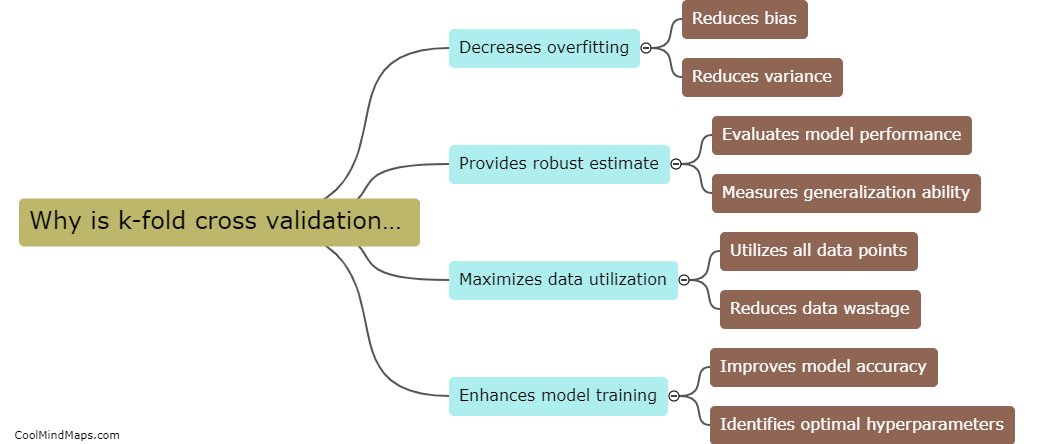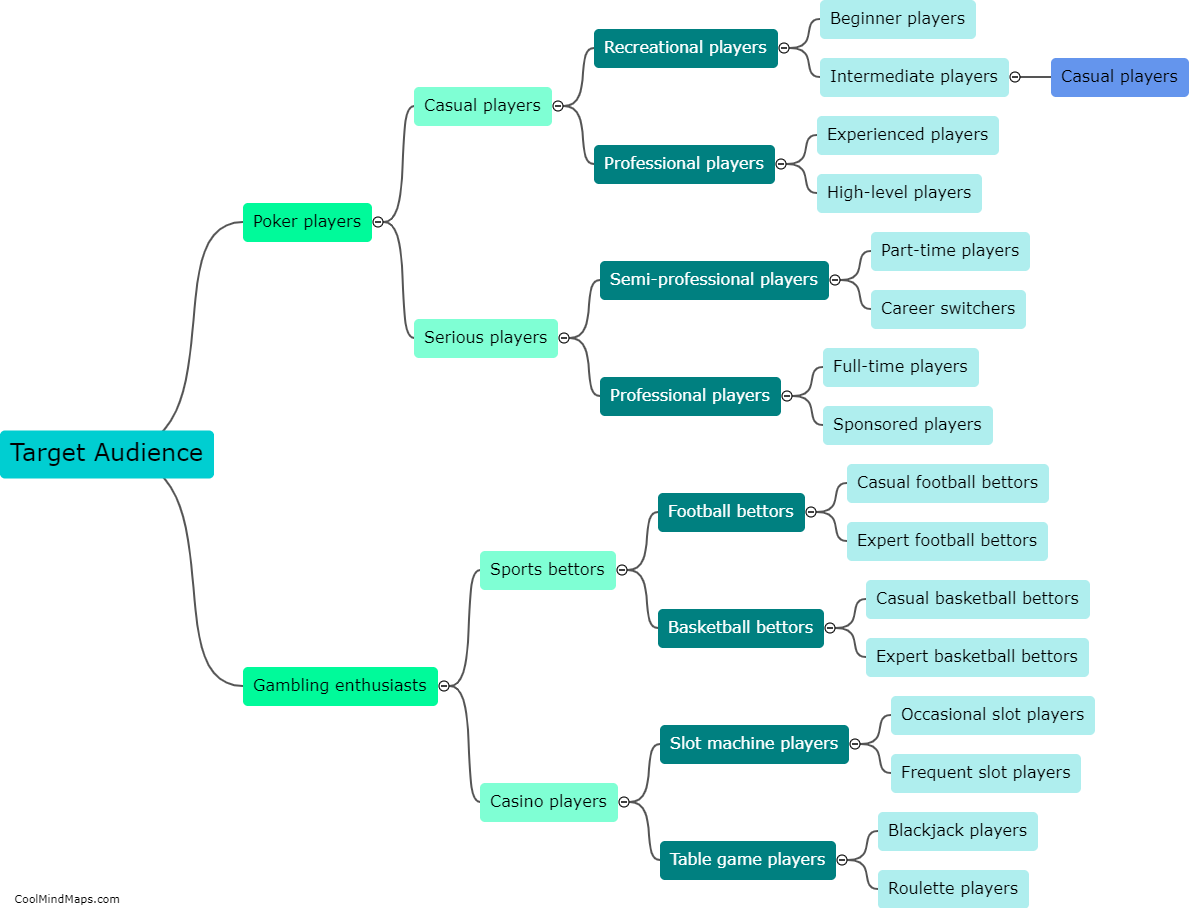How does stratified k-fold cross validation work?
Stratified k-fold cross-validation is a popular technique used in machine learning to evaluate the performance of a model. It is an extension of k-fold cross-validation, which splits the dataset into k equal-sized folds. However, the stratified version ensures that each fold maintains the original class distribution of the target variable. In other words, it preserves the proportion of different classes in each fold, which is especially useful when dealing with imbalanced datasets. This approach helps to reduce bias and provides a more accurate estimate of the model's performance. The model is trained and validated k times, each time using a different fold as the validation set while the rest act as the training set. The final performance is measured by averaging the results from all k iterations. Stratified k-fold cross-validation helps to mitigate the risk of overfitting and provides a robust assessment of a model's true predictive power.
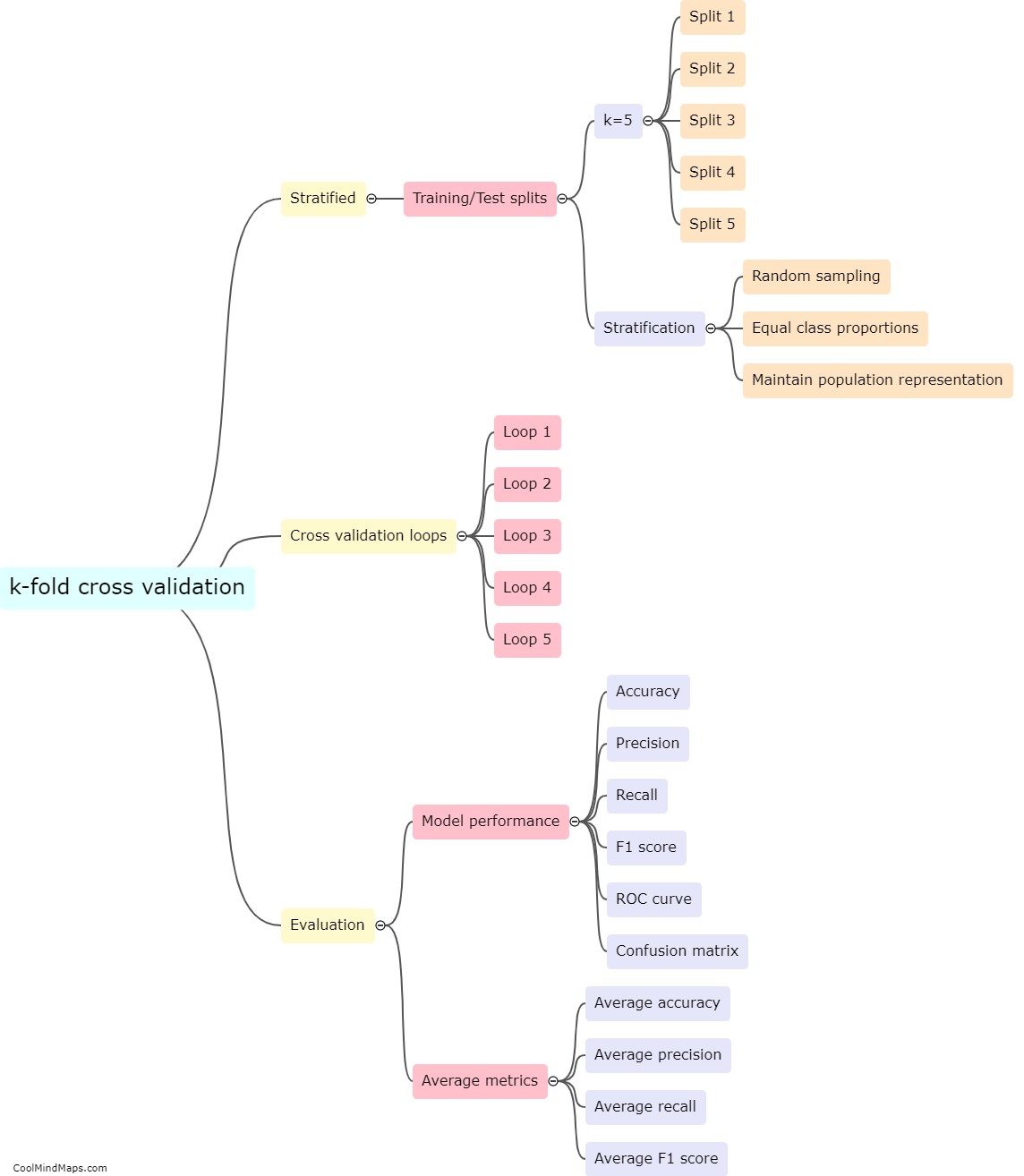
This mind map was published on 23 January 2024 and has been viewed 95 times.
